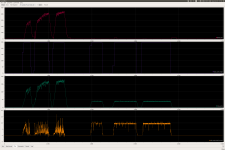casainho
10 GW
- Joined
- Feb 14, 2011
- Messages
- 6,045
I think the additional features may not be "big ones" but things like having cruise control the way it is now, that I prefer and not like original mode. The cruise control now is like implemented on old KUxxx controllers that BMSBattery sells since always -- this is flexibility and like personalizationstancecoke said:Hm, that's nice to have, but no one will use our firmware if there are no additional features against the Kunteng firmware. But no problem, we ca use the Java Tool for the parameters of the additional functions meanwhile.casainho said:I would like to focus on getting the firmware doing what original firmware does
Also, I hope that with our firmware, we can document a way for users be sure that they are getting best energy efficiency, by tunning the angle that I think can be different from motor to motor and that can't be done with original firmware.
Well, but in the end we can see what memory is available and decide.
Sorry but I want to put my time in improving motor code. For instance, I don't like the way we adjust now the angle -- I think having it in terms of angle value/time may be better than actual phase B current value -- I hope to be able to improve motor efficiency and having a clear process to do it.stancecoke said:I agree, it's much more important to implement the PAS-Modes in the master branch. The throttle mode is completely stupid. If I want to take a motorcycle ride, I'll take my BMW!
But I will receive a torque sensor and so I will also want to make it working










